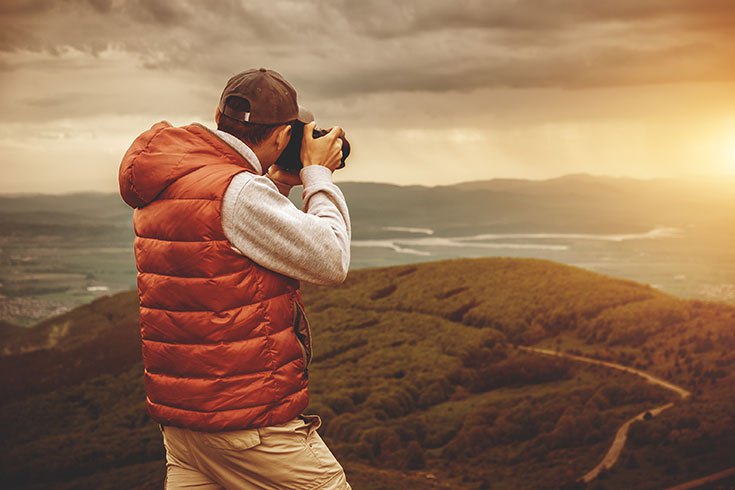Everything You Should Know Before Buying Your First Camera
Sure, everyone now has a camera on their phone, but maybe it’s time to start thinking about taking better pictures.
Phone cameras are fine for group poses and selfies, but when you want to perfectly capture a moment or a scene, there’s nothing better than a camera on its own with all the features that come with it. However, it can be overwhelming to buy a new camera for the first time. What should you look for? How much should you spend? To help here is a guide to buying your first camera.
What do you want to shoot?
This is the very first question you should ask yourself when thinking about a new camera. What you plan on shooting most often should guide you in your shopping experience. Are you planning on shooting nature? At night? How about your child’s sports activities? Factoring in how much you have to spend, the type of camera and the accessories that you purchase alongside it will depend on what you’ll be photographing. If you plan on continuing to take those group shots and selfies, then perhaps save your money and stick with your phone, or a simple point-and-shoot digital camera. For more complicated and detailed shots, you will need something better.
Digital Single Lens Reflex (DSLR)
DSLR’s are probably the most commonly sold stand-alone cameras at the moment. The best thing about buying a DSLR is how versatile the camera can be. You can interchange the lenses and utilise many other accessories that will enhance your photography experience and make your shots the best they can be. If you’d like to photograph things that are far away, you can swap in a zoom lens and get a good look. If the lighting is low, you can use a lens meant to enhance the available light and put on an overboard flash. These are all options that are not available when you use a phone or a point-and-shoot camera, which have permanent lenses and no ability to attach a flash. However, because DSLRs use a mirror inside to produce the image, they tend to be quite bulky, and even more so when you take all the extras into consideration.
Mirrorless cameras
Mirrorless cameras are becoming more and more popular. They have a similar functionality to the DSLRs, but since they don’t require space for the mirror, they are much smaller and lighter. This makes them easier to carry around. The lenses in a mirrorless camera are also interchangeable, but as of now there is less variety in the types of lenses available. They also do not have a viewfinder, but for many who have been raised on looking at screens, this isn’t much of a drawback. What you see on the electronic screen is what the produced image will be. Pictures taken with mirrorless cameras are similar in quality to DSLRs, although they’re probably not at the same level. This would be the perfect beginner camera for someone who’s not sure what type of pictures they want to take, and aren’t ready to start exploring more advanced techniques quite yet.
Rugged cameras
You can take a good shot with any of the cameras mentioned above, provided it’s under the right conditions. However, you may be looking at a camera for more physical pursuits. Action cameras, for instance, are usually used for extreme sports enthusiasts who want to take good videos of their exploits. They feature wide lenses that can capture all the action in front of them and make the viewer feel like they are in on it. While they are mostly used for video, they can also produce still images as well. They often come with mounts so they can be attached to helmets or gear to get a first-person view of the proceedings. The images and video from these cameras can be tough to edit, and they are not as versatile as DSLRs or mirrorless cameras.
Tough cameras are used for more traditional photography, but they are constructed to be used in tough terrain. They are heavily reinforced so that they can take a beating, and they are also water resistant in case they get dropped in a river or are used on a rainy day. The primary feature of these cameras is how tough they are, so you will sacrifice image quality by using one.
Used?
For your first camera, buying used isn’t a bad option. It means you can spend less on your camera, and if it’s not for you, then you won’t need to break the bank. The great thing about modern cameras is that they have an extremely long lifespan, so even a camera that’s several years old will still have good life left in it. Scratches and damage to the outer casing should cause no problems in functionality, so you can buy a used camera without fear.

